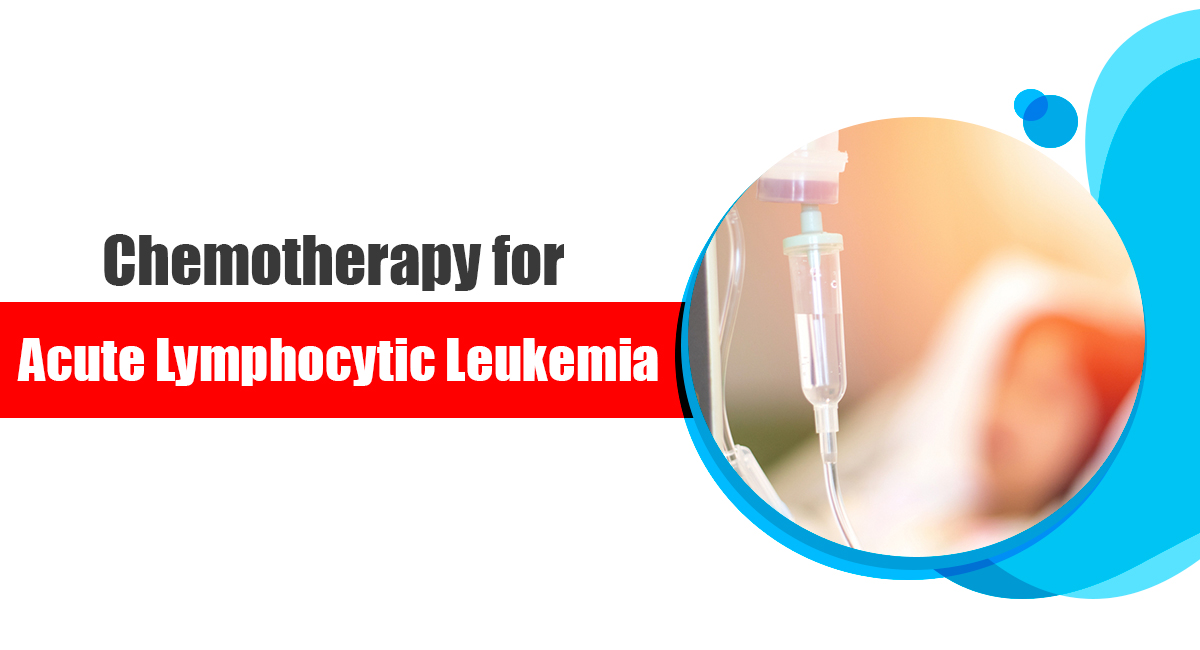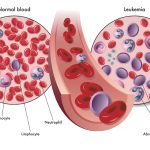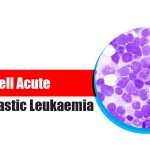Acute lymphocytic leukemia (ALL), also known as acute lymphoblastic leukemia, is a fast-growing cancer of the bone marrow and blood. This disease leads to the overproduction of immature white blood cells, called lymphoblasts, which crowd out healthy cells in the bone marrow, causing various health issues. It is the most common type of leukemia in children, accounting for over 75% of childhood acute leukemias, while also affecting around 20% of adults diagnosed with leukemia. In India, around 5,000-6,000 new cases of ALL are estimated each year, with childhood leukemia cases rising, making effective treatments essential.
ALL is a complex and diverse disease, requiring detailed tests to identify the type of leukemia cells present. These tests include examining the cells under a microscope and running biochemical, cytogenetic, and molecular studies. Since leukemia can develop at various stages of lymphoid cell maturation, knowing the specific type helps guide treatment decisions.
Role of Chemotherapy in Treating ALL:
Chemotherapy is the main treatment for most ALL patients. Chemotherapy drugs are powerful medications that enter the bloodstream, allowing them to travel throughout the body to attack cancer cells. This ability is vital for treating leukemia, which affects the blood and bone marrow.
However, chemotherapy’s intense effects mean it’s unsuitable for patients with severe health conditions, though age alone is not a limiting factor. Chemotherapy for ALL typically involves three stages: induction, consolidation, and maintenance.
Phases of Chemotherapy for ALL:
- Induction: This first phase aims to destroy as many leukemia cells as possible to achieve remission. It is intense and lasts about a month.
- Consolidation (Intensification): After achieving remission, this phase seeks to eliminate any remaining cancer cells. It’s also intensive, often spanning several months.
- Maintenance (Post-Consolidation): This less intensive phase helps prevent the cancer from returning and typically lasts around two years.
During these phases, patients may experience side effects and require hospital stays, especially in the intensive phases. Chemotherapy is generally administered in cycles, with treatment followed by rest periods, giving the body time to recover. The drugs can be injected intravenously (IV), intramuscularly, under the skin, or orally, depending on the medication and treatment needs.
For ALL patients, chemotherapy is sometimes injected directly into the cerebrospinal fluid (CSF) surrounding the brain and spinal cord through a method called intrathecal chemotherapy. This is necessary because standard chemotherapy doesn’t easily reach these areas, and intrathecal chemotherapy helps prevent or treat leukemia cells in the central nervous system.
Common Chemotherapy Drugs for ALL:
- Several chemotherapy drugs, often used in combination, are available to treat ALL. Recent FDA approvals and advancements have introduced more options, improving outcomes and reducing side effects.
- Vincristine Liposomal: This modified version of vincristine is encapsulated in a liposomal shell, making it potentially more effective and less toxic. It’s given intravenously and is useful for patients whose cancer has returned or who have not responded to initial treatments.
- Nelarabine (Arranon): Approved for T-cell acute lymphoblastic leukemia (T-ALL), this drug is especially helpful for patients who haven’t responded well to previous treatments. Nelarabine’s addition to chemotherapy protocols has shown promise in improving survival rates, particularly in children and young adults.
- Doxorubicin (Adriamycin): An anthracycline antibiotic derived from bacteria, doxorubicin is widely used for ALL and other cancers. It is usually given in intervals and is easily recognizable by its bright red color. It should be administered carefully to avoid potential side effects, especially heart issues.
- Cytarabine (Ara-C): Used to treat both ALL and acute myeloid leukemia (AML), Cytarabine inhibits DNA synthesis in cancer cells. It’s also used for cases where leukemia has spread to the brain or spinal cord.
- Pegaspargase (Oncaspar): Commonly used for both adults and children with ALL, especially when patients are allergic to native L-asparaginase. Pegaspargase has been effective for over 25 years and is part of multi-agent treatment regimens.
- Methotrexate: Used to treat ALL involving the central nervous system or to prevent its spread, methotrexate is a staple in chemotherapy. It’s effective for various blood cancers and is administered at different doses based on the treatment phase.
- Cyclophosphamide: Effective in combination treatments, cyclophosphamide is widely used for both ALL and other leukemias. It may cause temporary hair loss, which usually reverses after treatment ends.
- Prednisone: This corticosteroid is used to reduce inflammation and has direct antileukemic effects. It’s often paired with other drugs in induction therapy and plays a significant role in managing leukemia.
- Dexamethasone: Similar to prednisone, dexamethasone is used in ALL treatments, especially during the induction and maintenance phases. It’s also given as intermittent pulses during continuation therapy.
Latest FDA-Approved Chemotherapy Drugs for ALL:
The FDA continues to approve targeted drugs, such as:
- Blinatumomab (Blincyto): A bispecific antibody that connects T-cells with leukemia cells, prompting the immune system to attack the cancer cells.
- Inotuzumab Ozogamicin (Besponsa): This drug combines an antibody with a chemotherapy agent, delivering the treatment directly to leukemia cells, and minimizing exposure to healthy cells.
These medications are primarily used for patients with refractory ALL, providing more options and potentially better outcomes. Newer drugs and formulations, such as inotuzumab ozogamicin and blinatumomab, target specific proteins in cancer cells, offering more targeted approaches to treating ALL. Both are used in patients whose ALL has relapsed or who have not responded to other treatments.
Side Effects of Chemotherapy:
Chemotherapy drugs target rapidly dividing cells, which means they can also affect healthy cells. The side effects of chemotherapy vary depending on the drugs, doses, and duration of treatment. Common side effects include:
- Hair loss
- Nausea and vomiting
- Diarrhea or constipation
- Mouth sores
- Loss of appetite
- Fatigue and shortness of breath
Chemotherapy can also impact blood cell counts, leading to:
- Increased infection risk (due to reduced white blood cells)
- Bruising and bleeding (from lower platelet counts)
- Fatigue (from reduced red blood cells)
Certain drugs have unique side effects:
- Cytarabine (Ara-C) at high doses may cause eye dryness and affect balance.
- Vincristine can lead to nerve damage, resulting in numbness or tingling in the extremities.
- Anthracyclines like doxorubicin require careful dosing as they can affect heart health.
Frequently Asked Questions (FAQs):
What are the survival rates for ALL in India?
The survival rate for ALL varies by age and response to treatment. For children under 15, survival rates are around 70-80% in India, with advancements in treatment protocols contributing to better outcomes.
How is intrathecal chemotherapy different from regular chemotherapy?
Intrathecal chemotherapy is administered directly into the cerebrospinal fluid to treat leukemia cells in the brain and spinal cord, areas where standard chemotherapy may not reach effectively.
Are there any dietary recommendations during chemotherapy for ALL?
Patients should eat a balanced diet with plenty of fluids. It’s essential to avoid raw or undercooked foods to minimize infection risk due to low immunity.
Can I order chemotherapy drugs for ALL for international shipping from India?
Yes, Indian suppliers like the Indian Pharma Network (IPN) facilitate the global supply of chemotherapy drugs, ensuring legal and reliable delivery. This can be especially useful for patients in countries where specific drugs may not be readily available. Send your inquiries via Call/WhatsApp: +919310090915 or TOLL-FREE: 1800-889-1064 to buy Nelarabine-Blinatumomab-Besponsa in UAE, Canada, United Kingdom, Germany, France, Australia, Japan, Brazil, and South Africa.
How long does the entire chemotherapy treatment for ALL last?
Chemotherapy treatment for ALL typically lasts 2-3 years, including all phases. Induction and consolidation are shorter but more intensive, while maintenance is longer and less intensive.
Who can I contact to purchase chemotherapy drugs for ALL in India?
For assistance in buying chemotherapy drugs (Cytarabine, Vincristine, Oncaspar) for ALL in India, contact the Indian Pharma Network (IPN) via Call/WhatsApp: +919310090915 or TOLL-FREE: 1800-889-1064. IPN provides guidance and support to ensure safe and authorized access to necessary medications.
What precautions should I take to manage side effects during chemotherapy?
Stay hydrated, eat nutritious food, and report any severe side effects to your healthcare team. Resting and avoiding exposure to infections is essential due to reduced immunity during treatment.






